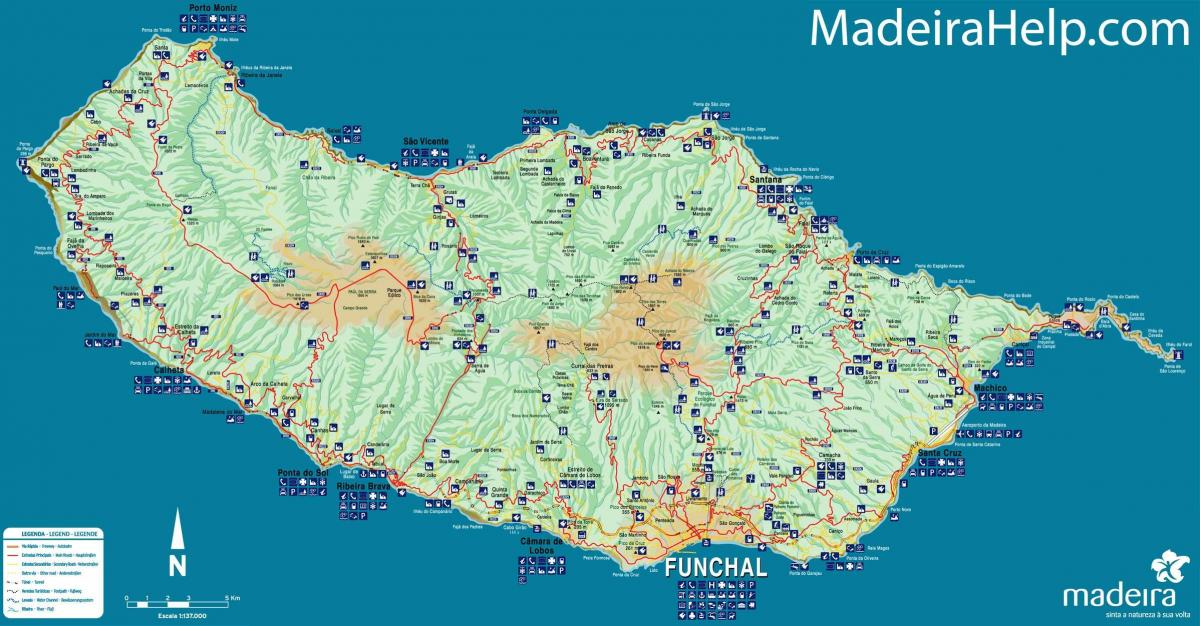search
Madeira Portugal map
Map of Portugal Madeira. Madeira Portugal map (Southern Europe - Europe) to print. Madeira Portugal map (Southern Europe - Europe) to download. Madeira (play /məˈdɪərə/ mə-deer-ə or /məˈdɛərə/ mə-dair-ə; Portuguese: [mɐˈðejɾɐ] or [mɐˈðɐjɾɐ]) is a Portuguese archipelago that lies between 32°22.3′N 16°16.5′W / 32.3717°N 16.275°W and 33°7.8′N 17°16.65′W / 33.13°N 17.2775°W, just under 400 km north of Tenerife, Canary Islands, in the north Atlantic Ocean and an outermost region of the European Union as you can see in Madeira Portugal map. The archipelago comprises the major part of one of the two Autonomous regions of Portugal (the other being the Azores located to the northwest), that includes the islands of Madeira, Porto Santo, and the Desertas, administered together with the separate archipelago of the Savage Islands.
Administratively, Madeira (with a population of 267,302 inhabitants in 2011) and covering an area of 768.0 km2 (296.5 sq mi) is organized into eleven municipalities as its shown in Madeira Portugal map. Funchal, is the capital and principal city of the Madeira Autonomous Region, located along the southern coast of the island of Madeira. It is a modern city, located within a natural geological "amphitheater" composed of volcanological structure and fluvial hydrological forces. Beginning at the harbor (Porto de Funchal), the neighborhoods and streets rise almost 1,200 metres (3,900 ft), along gentle slopes that helped to provide a natural shelter to the early settlers.
The region has a total population of just under 270,000 inhabitants, the majority of whom live on the main island of Madeira where the population density is 337/km²; meanwhile only around 5,000 live on the Porto Santo Island where the population density is 112/km² as its mentioned in Madeira Portugal map. As in continental Portugal, the most frequent mtDNA haplogroup in Madeira is H (36.2%), followed by U (19.4% including 3.9% of North African Berber U6), T (7.7%), pre-HVclades (7.1%) and K (6.5%). Two haplogroups, H and U5 alone account for more than 50% of the individuals. The relatively high frequency of sub-Saharan L and M1 haplogroups (14.8%) in Madeira is also consistent with the historical records of slaves being introduced in both the south of Portugal and in Madeira.


